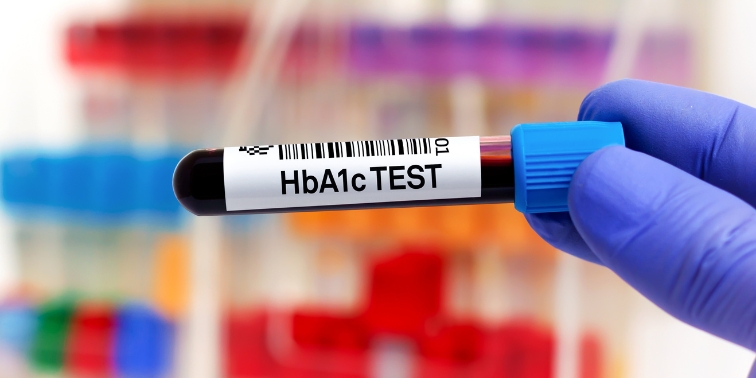Hey ladies! Living with diabetes can feel like a full-time job, can’t it? Between managing blood sugar levels, watching what you eat, and trying to stay active, it’s easy to feel overwhelmed. But here’s the thing: taking care of yourself is not selfish, it’s essential. And that includes staying on top of your regular health checks.
Think of these checkups as your secret weapons – they help you catch potential problems early and keep you feeling your best. As a woman with diabetes, you have some specific health needs that are important to monitor. Let’s dive into seven essential health checks that every woman with diabetes should prioritize.
1. Blood Sugar Monitoring: Your Daily Dashboard

Okay, this one might seem obvious, but it’s the foundation of diabetes management. Regularly checking your blood sugar levels gives you real-time feedback on how your body is doing. It helps you understand how food, exercise, stress, and illness affect your glucose levels. It is important to talk to your doctor about the frequency of testing, which may vary based on your individual needs and treatment plan.
Frequency:
- Type 1 Diabetes: Typically 4-10 times per day (before meals, snacks, exercise, bedtime, and sometimes during the night).
- Type 2 Diabetes: Frequency varies greatly. It can range from multiple times per day to a few times per week. This depends on whether you are on insulin, your treatment goals, and your doctor’s recommendations.
Keep a logbook or use a glucose monitoring app to track your readings. It is amazing how helpful this information can be when you are making decisions about your diet and lifestyle. This information is also crucial for your doctor, so they can make any needed adjustments to your treatment plan. Don’t be afraid to experiment a little to see what works best for you (always under your doctor’s guidance, of course!).
2. HbA1c Test: The Big Picture

While daily blood sugar monitoring shows you the immediate picture, the HbA1c test gives you a broader perspective. This test measures your average blood sugar levels over the past 2-3 months. It tells you the percentage of hemoglobin that has glucose attached to it. This gives your doctor valuable insights into how well your diabetes has been managed over time.
Think of it as your report card for diabetes management. Aim for an HbA1c level below 7%, but your doctor will help you determine your individual target. I always get a little nervous before my HbA1c test, but it’s a great motivator to stay on track!
Frequency:
- Generally: Every 3-6 months.
- If meeting treatment goals and blood sugar is stable: Every 6 months.
- If treatment has changed or not meeting goals: Every 3 months.
3. Eye Exam: Protecting Your Vision

Diabetes can affect your eyes, increasing the risk of conditions like diabetic retinopathy, cataracts, and glaucoma. The scary part is, you might not notice any symptoms in the early stages. That’s why it is so crucial for women to get a comprehensive dilated eye exam at least once a year.
Your eye doctor will be able to spot any changes early on, when treatment is most effective. This simple checkup can make all the difference in protecting your precious eyesight. Don’t put this one off!
Frequency:
- Generally: At least once a year.
- If you have diabetic retinopathy: More frequent exams may be needed, as advised by your eye doctor.
4. Kidney Function Test: Keeping Your Filters Healthy

Your kidneys are like the unsung heroes of your body, filtering waste products from your blood. Diabetes can put extra strain on these vital organs, increasing the risk of kidney disease.
A simple blood or urine test can check your kidney function. This will help your doctor catch any problems early. Early detection is key to preventing further damage. Maintaining good control of your blood pressure can also protect your kidneys.
Frequency:
- Generally: At least once a year.
- If you have kidney problems or high blood pressure: More frequent tests may be needed.
5. Cholesterol and Blood Pressure Checks: Heart-Smart Living

Women with diabetes have a higher risk of heart disease. This makes it even more important to keep your cholesterol and blood pressure in check. High cholesterol and blood pressure are known as “silent killers” because they often have no symptoms.
Get your cholesterol and blood pressure checked regularly, as recommended by your doctor. Work with your healthcare team to set healthy targets and make lifestyle changes if needed. These simple checks can be lifesavers. Healthy eating, regular exercise, and certain medications can keep these numbers in a safe range.
Frequency:
- Blood Pressure: At each regular healthcare visit. At least once every 3 months is ideal.
- Cholesterol: At least once a year. More often if you have high cholesterol or other risk factors.
6. Foot Exam: Happy Feet, Happy You

Nerve damage and poor circulation, both common complications of diabetes, can wreak havoc on your feet. You might not even feel a small cut or sore, which can quickly become infected.
Get a comprehensive foot exam at least once a year. Your doctor will check for any signs of nerve damage, poor circulation, or foot deformities. They can also give you advice on proper foot care. This includes inspecting your feet daily for any cuts, blisters, or redness. In addition, you should be sure to wear comfortable shoes that fit well. These easy steps can prevent serious foot problems down the line.
Frequency:
- Generally: At least once a year.
- If you have neuropathy or peripheral artery disease: More frequent exams may be needed.
7. Dental Checkups: Smile Bright, Stay Healthy

Did you know that gum disease is more common and severe in people with diabetes? It’s true! High blood sugar levels can create an environment where bacteria thrive, leading to gum inflammation and infection.
See your dentist every six months for a cleaning and checkup. Be sure to let your dentist know that you have diabetes. This will ensure they provide you with the best possible care. Maintaining good oral hygiene, including brushing and flossing regularly, is also crucial. This can prevent gum disease and keep your smile healthy.
Frequency:
- Generally: Every 6 months.
- If you have gum disease: More frequent visits may be needed.
Taking Charge of Your Health
Living with diabetes is a marathon, not a sprint. These essential health checks might seem like a lot to keep track of, but they’re investments in your long-term well-being. By being proactive and working closely with your healthcare team, you can manage your diabetes effectively and live a full, healthy life.
Important Note: The frequency of these checks can vary based on your age, how long you’ve had diabetes, your overall health, and any complications you may have. Always follow your doctor’s recommendations for your specific situation.
Remember, you’re not alone on this journey. Connect with other women living with diabetes, share your experiences, and support each other. And most importantly, be kind to yourself. You’re doing an amazing job! What other health checks do you find important for managing your diabetes?
References
- Association of glycaemia with macrovascular and microvascular complications of type 2 diabetes (UKPDS 35): prospective observational study
- Intensive blood-glucose control with sulphonylureas or insulin compared with conventional treatment and risk of complications in patients with type 2 diabetes (UKPDS 33)
- Effect of intensive therapy on the microvascular complications of type 1 diabetes mellitus
- Retinopathy and nephropathy in patients with type 1 diabetes four years after a trial of intensive therapy. The Diabetes Control and Complications Trial/Epidemiology of Diabetes Interventions and Complications Research Group
- Screening for Diabetic Retinopathy
- Prevalence of chronic kidney disease in persons with undiagnosed or diagnosed diabetes mellitus
- Intensive Diabetes Treatment and Cardiovascular Disease in Patients with Type 1 Diabetes
- Statin Use and Incident Diabetes: A Systematic Review and Meta-analysis
- Periodontal Disease and Diabetes: A Two-Way Street
- Consensus report: the role of self-monitoring of blood glucose in the management of patients with type 2 diabetes on oral therapy
- Standards of Medical Care in Diabetes—2023 Abridged for Primary Care
- Effects of intensive glucose lowering in type 2 diabetes







